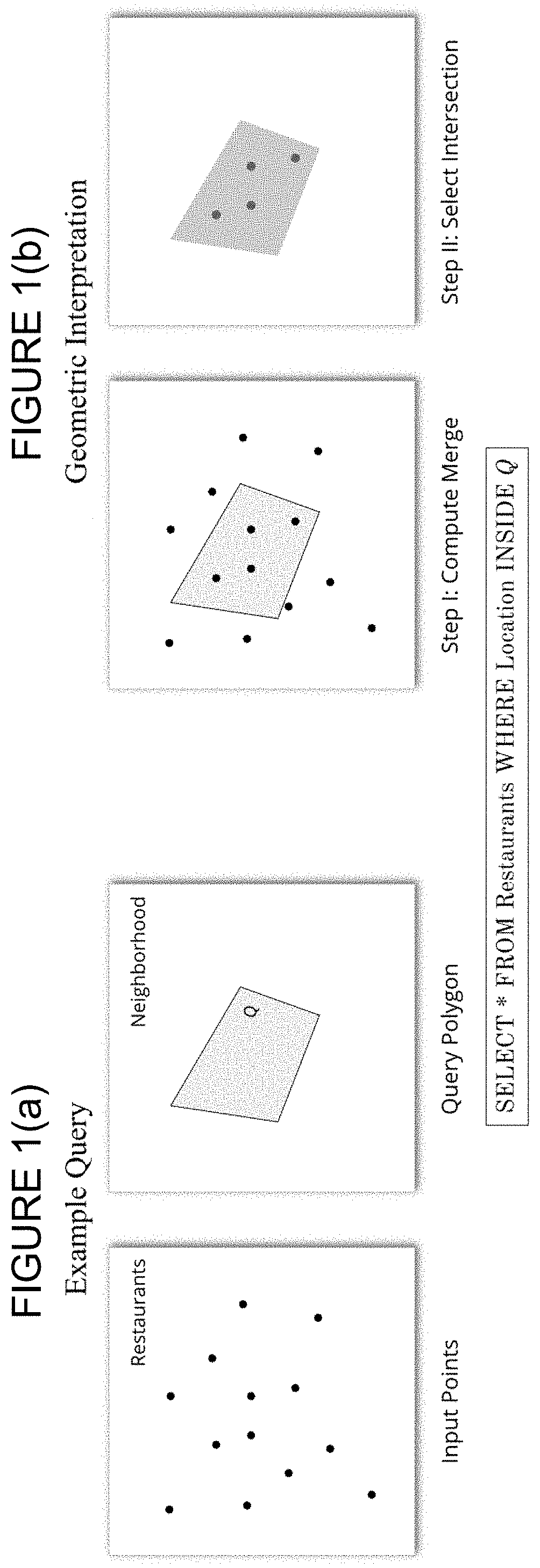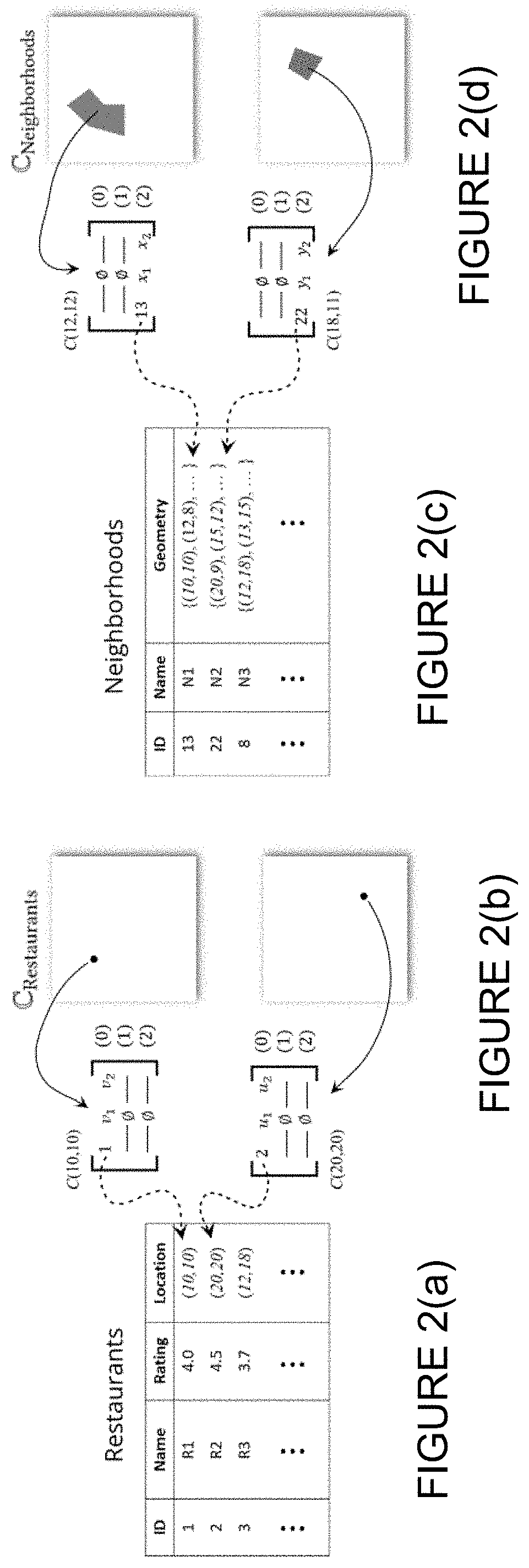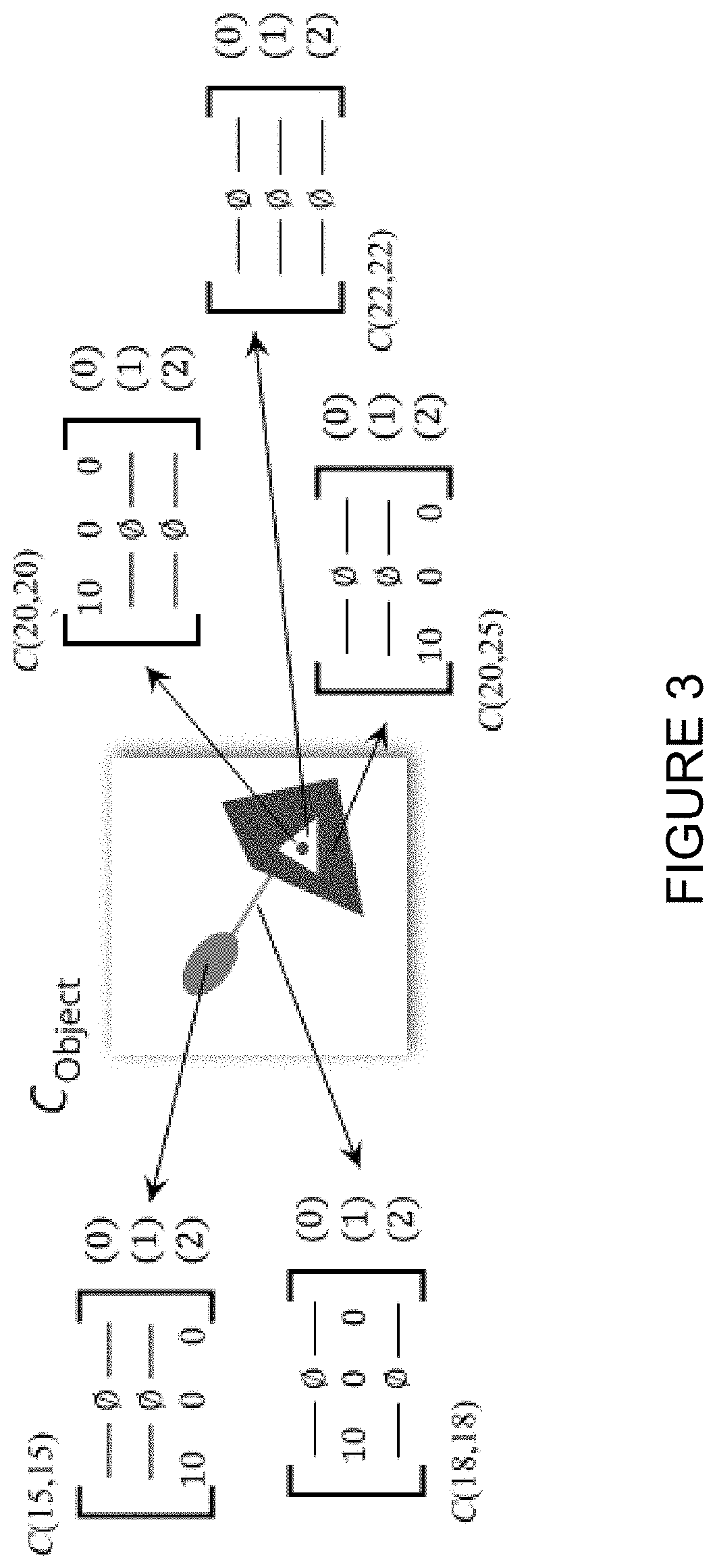Spatial queries
a spatial data and querying technology, applied in the field of spatial data and querying spatial data, can solve the problems of difficult reuse of these implementations for other similar queries, rigid and hard-to-expand approaches in these systems, and restricted support of specific queries
- Summary
- Abstract
- Description
- Claims
- Application Information
AI Technical Summary
Benefits of technology
Problems solved by technology
Method used
Image
Examples
example implementation
[0042]Example implementation strategies are described, including a subset of the proposed operators that demonstrates: (1) how the proposed geometric data representation and composable operators are naturally suited for GPUs; and (2) how example composable operators can be re-used in different queries. Example implementations consistent with the present description achieve over two orders of magnitude speedup over a custom CPU-based implementation, and consistently outperforms custom GPU-based approaches as well. (See § 4.4.2.)
[0043]The compatibility of the proposed operations with the relational model and its utility for query optimization is discussed. (See § 4.4.5.)
§ 4.1 Definitions and Representation of Spatial Data
[0044]§ 4.1.1 Data Representation
[0045]This section formalizes the notion of a spatial data set, and then defines the concept of a canvas, the spatial analogue of a relational tuple.
[0046]§ 4.1.1.1 Spatial Data
[0047]As discussed in § 1.2 above, the inventors believe t...
PUM
 Login to View More
Login to View More Abstract
Description
Claims
Application Information
 Login to View More
Login to View More - R&D
- Intellectual Property
- Life Sciences
- Materials
- Tech Scout
- Unparalleled Data Quality
- Higher Quality Content
- 60% Fewer Hallucinations
Browse by: Latest US Patents, China's latest patents, Technical Efficacy Thesaurus, Application Domain, Technology Topic, Popular Technical Reports.
© 2025 PatSnap. All rights reserved.Legal|Privacy policy|Modern Slavery Act Transparency Statement|Sitemap|About US| Contact US: help@patsnap.com



